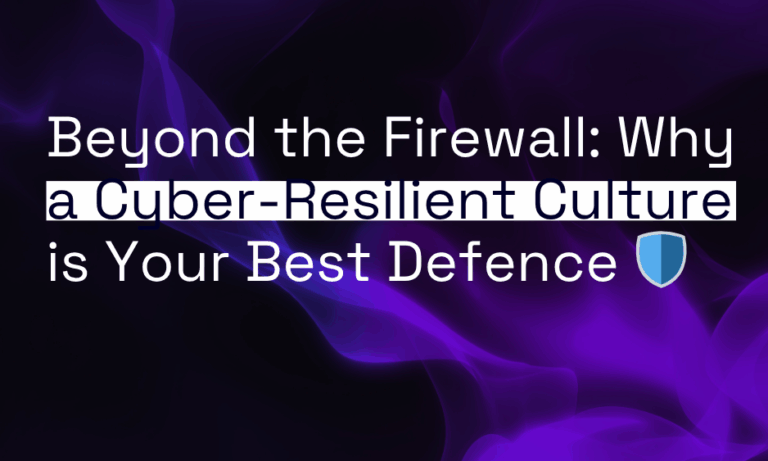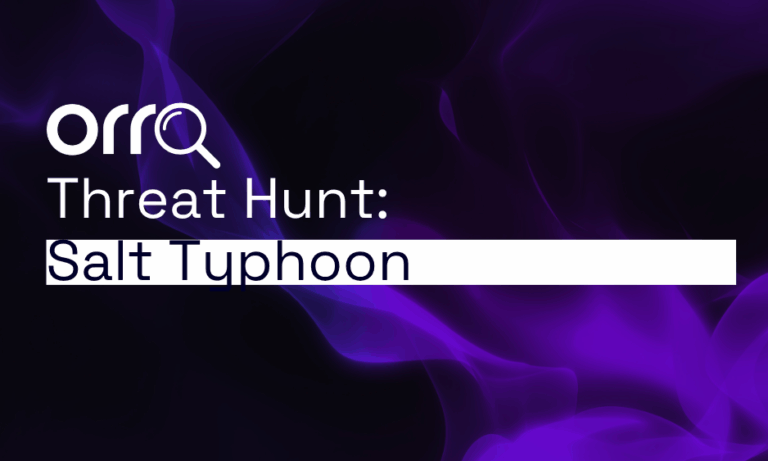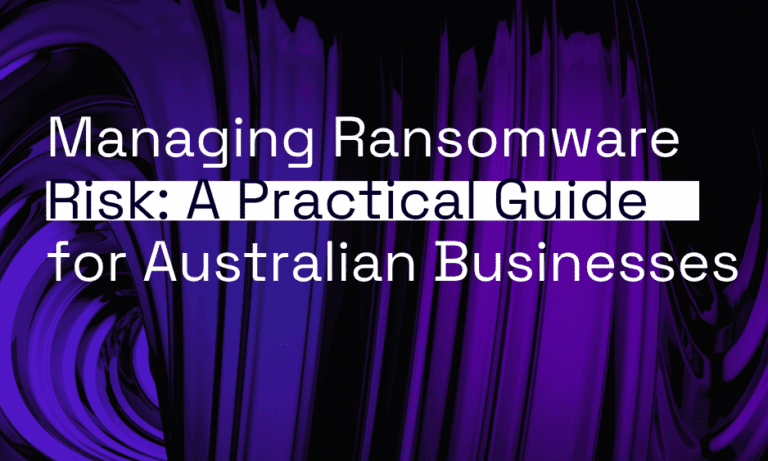It can be said that the only constant in the world of cyber security, is change. Cyber threats are evolving more rapidly than ever, with both the technology and people behind the cyber attacks becoming more and more sophisticated.
Whether you are a large enterprise or an SME, the risk of cyber attack is ever present. While the outcome will be similar for both, with loss of revenue and data, as well as reputational damage and the cost to restore systems, the scale of the disaster is undoubtedly far greater for enterprises.
So, what are the greatest cyber threats to enterprises currently, and what can they do to face this emerging cyber security challenge? Here are some steps enterprises can take right now to build their cyber resilience and protect their business.
Common cyber security threats facing enterprises
Unsecured devices, phishing and ransomware remain some of the biggest cyber security threats to enterprises. Here’s a brief summary of how each of these threats works.
- Phishing uses social engineering to trick people into providing usernames, passwords and other confidential information so that hackers can access enterprise systems and data.
- Unsecured work devices, such as laptops, tablets and mobile phones can provide easy access for hackers through weak authentication protocols, legacy password hashes and hidden backdoors.
Once a cyber attacker has access to your systems and data, the threats include:
- Ransomware attacks using malware to encrypt data and then demanding a ransom to be paid in order to decrypt the data.
- Data breaches from unauthorised access to sensitive data, including customer information or intellectual property.
- Malware software spread through malicious emails, websites, and applications designed to damage to systems and steal data.
Educating your people on cyber security
Interestingly, the common denominator across these cyber security threats is people. Your team’s level of awareness of cyber security can be a strength, or your greatest weakness. Understanding that cyber security is not just an IT problem, but everyone’s responsibility is a positive step forward for any enterprise. Getting the Board, Executive, CEO and other key stakeholders involved in cyber security planning is critical. For some organisations, there are regulatory compliance requirements, meaning executives can be held personally responsible for breaches.
Training and communication are key, as is creating a positive cyber security culture that is embedded in the organisation. Simple steps like implementing multi-factor authentication and regularly backing up data can make a big difference.
Remember that cyber threats can even stem from people who have left the organisation but still retain access to certain systems and data. Whether they themselves are hacked, or act with malicious intent, the outcome is the same. Be sure to have robust processes in place to remove employees, past or present, from systems and data that they no longer need to access.
Enterprise architecture to protect your business from cyber threats
When it comes to cyber security for enterprise, we like to start with a baseline by conducting a maturity assessment. From there we will analyse vulnerabilities and risks, taking into account business strategy and risk profile, as well as a review of critical data storage and access.
A robust cyber security strategy will then include patching, penetration testing, backing up critical data and training staff to be cyber security aware and prepared in the event of a cyber security attack.
- Cyber security maturity assessment – this will identify any gaps in compliance and risk management of information assets, and show the scale of cyber security vulnerabilities. Then we can evaluate the level of cyber maturity across the enterprise and develop a prioritised action plan.
- Analyse vulnerabilities and risks – review all aspects of the enterprise for vulnerabilities, including people, training, processes, data and technical solutions like firewalls and antivirus software. Take into account business strategy and risk profile when determining the level of risk associated with each vulnerability.
- Understand critical information assets – in this stage we ask where is the data, and how critical is this data to the business? And even more importantly, how sensitive is this data? Understanding this helps to shape the security response and ensure resources are invested in the right place, protecting the most critical assets.
- Penetration testing – using the same techniques and processes as cyber attackers we can uncover any vulnerabilities and help to demonstrate the impact of these weaknesses across the enterprise.
- Patch vulnerabilities – any identified vulnerabilities are patched to create secure architecture across all levels of the enterprise, along with resolving any misconfigurations and updating firmware.
- Prioritise critical remediations – assess the risk against each vulnerability and prioritise the most critical vulnerabilities to remediate first.
- Minimise attack surface – by reducing the number of points across your network that a hacker can access, the threat of cyber attack is reduced.
- Maintain backups – Maintaining up-to-date backups is critical for quickly restoring systems and data in the event of a cyber attack.
- Undertake threat modelling – be prepared and run tabletop exercises with your team to simulate a cyber attack and the response.
- Training – ongoing cyber security training and education are critical aspects of maintaining a strong cyber security posture.
While no cyber security plan can provide 100% protection from cyber attacks, being prepared is critical to both reduce the risk of a cyber attack and to recover from one should it occur. Improving your cyber security posture is no longer optional, it’s vital to the survival of your enterprise.
Protecting your enterprise from cyber security threats requires a strategic approach. Orro can provide you with security assurance to increase your enterprise’ digital maturity. We use visibility and intelligence systems to provide a comprehensive overview of the cyber threat landscape, allowing you to gain back control of what’s happening in your digital environment.
Find out more at Orro Cyber Security









